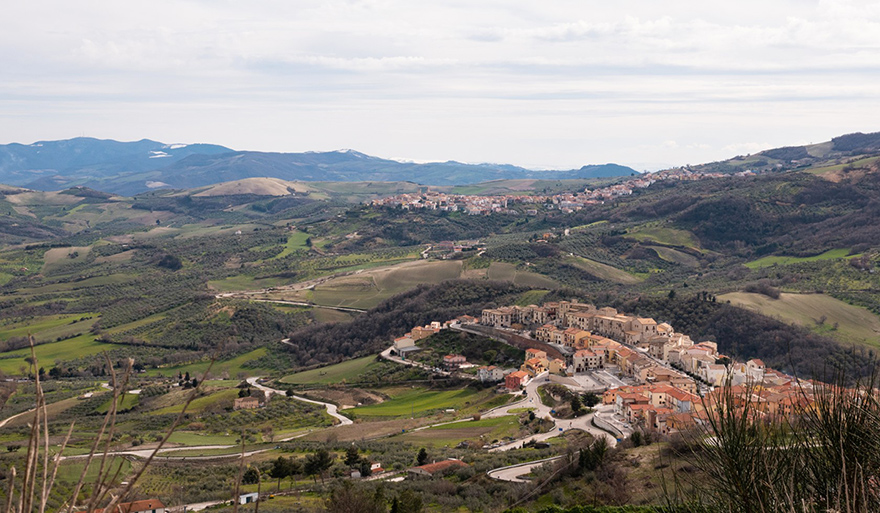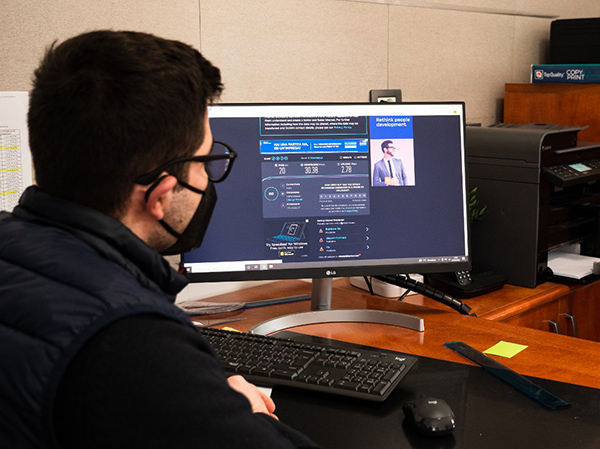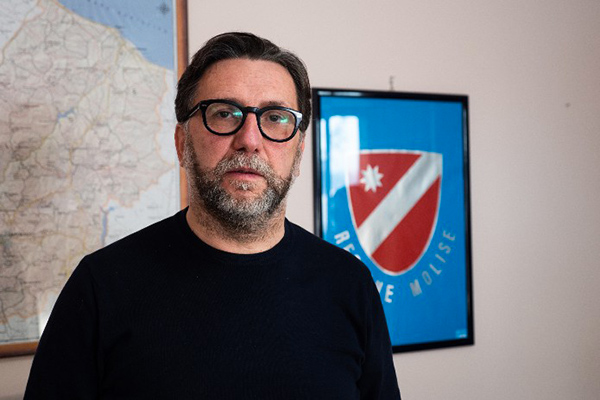In remote Molise, fast internet is still a mirage
Thanks to investments by the Italian state and the European Regional Development Fund, tens of thousands of people in the most urban and industrial areas of Molise can now surf the net very quickly. But in inland areas, it’s another story.

San Giuliano di Puglia (Italy)
Every day since he returned to work in the small town where he grew up, programmer Romeo Bertoldo has encountered the same problem: the internet connection in his office is frustratingly slow.
In San Giuliano di Puglia, a town of about a thousand inhabitants which despite its name is located in the mountains of Molise, it can take half an hour to download programs of only a few hundred megabytes – such as Google Chrome, for example. Sending even a single file to a customer can be a time-consuming task. At the small website development company which they run, he and his colleagues sometimes end up using the 4G connection on their mobile phones to speed things up.
Even their normal connection does not use copper ADSL cables or fibre-optic ones, which would be the stable and faster solution. To surf the net, Bertoldo and his fellow citizens have to rely on radio waves, picked up by a small antenna mounted on the facade of their building.
"It's difficult from a business point of view," says the 25-year-old. "If there is something I could develop in an hour or two, I have to bear in mind that the downtime may take whole hours. And there is no system in place to overcome this problem.” As in so many other remote areas in the Molise hinterland, better digital infrastructure has yet to arrive in San Giuliano.

The Italian digital divide
According to the latest estimates by the Italian Ministry of Innovation and the telecommunications authority, published in 2020, more than 63,000 people across Italy live in so-called "white zones", where more than 10% of homes have no fixed internet access whatsoever. Another 16,000 people live in places where there is not even mobile phone reception. In total, at least 485,000 homes have no access to the internet or can only rely on radio links, as Bertoldo and his colleagues do. Mostly they are in inland areas, often mountainous and sparsely populated.
Molise is a region so remote that, in the punchline of a popular Italian joke, it doesn't even exist. Here almost 13,000 inhabitants don't have a broadband ADSL-type connection and only 9% of the population has access to ultra-broadband. In practice, we are talking about thousands of people who find it difficult to watch a film in streaming, to follow a lecture or a meeting on Zoom, to shop online, to do home banking, or to receive digital medical certificates. Thousands of people have been living for years cut off from services and conveniences that, especially during the pandemic, have proved synonymous with continuing to study and work. The situation arises because private operators are unwilling to invest in sparsely populated areas where they are unlikely to make a financial return.
This flaw in the free market – a consequence of the creeping privatisation of telecommunications infrastructure in the 1990s in Europe and the United States – fuels the so-called digital divide. In 2003 the Italian government tasked a public company, Infratel, with building digital infrastructure in so-called “market failure” areas. Since 2015, Infratel has had the job of implementing the new European Digital Agenda, which mandated ultra-broadband in the homes of 85% of EU citizens by 2020.
Two years further on, this hope has died – in Molise as in many other Italian regions. Steps in the right direction have been taken: Infratel has financed four thousand construction sites across the country, and 3,500 have already been completed.
The internet can be a solution to depopulation
In Molise, thanks to around €4 million from the European Regional Development Fund (ERDF) and a €1.7 million investment by Telecom Italia, 230 kilometres of latest-generation fibre-optic cable were built between 2015 and 2018, in the region's largest industrial and urban centres – the capital, Campobasso, and also Isernia, Pozzilli, Venafro and the coastal town of Termoli.
Between hospitals, schools, military bases, public administration offices and private homes, more than 70,000 citizens now have much faster and more stable internet access. In this region with a population of 305,600, many of those people are scattered among a myriad of small towns that are becoming depopulated year after year.
For Vittorino Facciolla, Molise's current regional councillor who was in charge of rural development in the previous administration, the bridging of the digital divide is closely linked to this depopulation. Inhabitants of inland areas have been moving towards the coast, leaving behind serious environmental problems.

"Abandoning rural and mountainous areas means causing a series of breakdowns: man's presence on the land is extraordinarily important in order to prevent soil erosion, mitigate instabilities and preserve the landscape heritage," he says.
In this sense, the role of European funding – aimed at closing the digital divide, preserving cultural and natural heritage, creating new jobs and strengthening social inclusion – has been important, says Facciolla. "It is very likely that, if it had not been there, public money would have been spent in a very different way, less future-oriented".
There is still a lot of work to be done, however – as confirmed by the reality of places like San Giuliano di Puglia, where work on the new ultra-broadband infrastructure is due to begin this year.
"Unfortunately, in Molise, the white zones are still widespread," points out Micaela Fanelli, regional councillor and vice-president of ALI, the League of Italian Local Authorities. This organisation has been putting pressure on companies such as Open Fiber – which builds fibre-optic network infrastructure across the peninsula, including white zones, and which in Molise has so far laid fibre in 73 municipalities – and Tiscali, a private Italian telecommunications company that has set out to invest even in “market failure” areas.
"The situation is clearly deleterious for the exercise of all rights, from health to education," stresses Fanelli, who lives in Riccia, a small town on the outskirts of Campobasso. "During the pandemic, my children had difficulty connecting to the internet for distance learning, and they were lucky compared to others who couldn't connect at all. Others could not do knowledge work. Living in areas where the signal is lacking doesn't give you the same job opportunities. Tomorrow, not being able to access telemedicine will mean having to drive an hour to save a life. And then you can't enjoy cultural activities involving video and audio in the same way, so there is a cultural backwardness. You can't see and hear friends, so there is social isolation.”
That reality is reflected by Romeo Bertoldo, the young programmer who has returned to San Giuliano di Puglia. "In the future, of course, we want to move away from here – not least because if we were to increase the staff, we would have to share the same bandwidth for more people, and that would be an impossible situation," he says. "This is a beautiful region, it's our home, but if the services remain as they are we will be forced to leave. Compared to the speed at which the rest of the world is going, we are lagging far, far behind."
 This article was produced as part of the Union Is Strength competition, organised by Slate.fr with the financial support of the European Union. The article reflects the views of the author and the European Commission cannot be held responsible for its content or use.
This article was produced as part of the Union Is Strength competition, organised by Slate.fr with the financial support of the European Union. The article reflects the views of the author and the European Commission cannot be held responsible for its content or use.